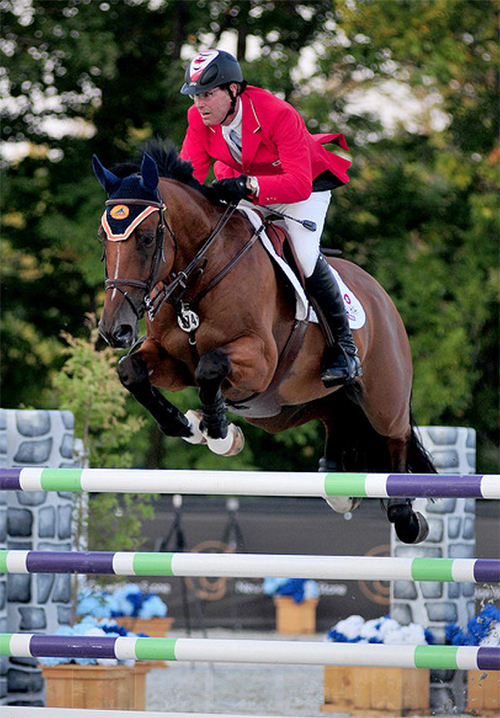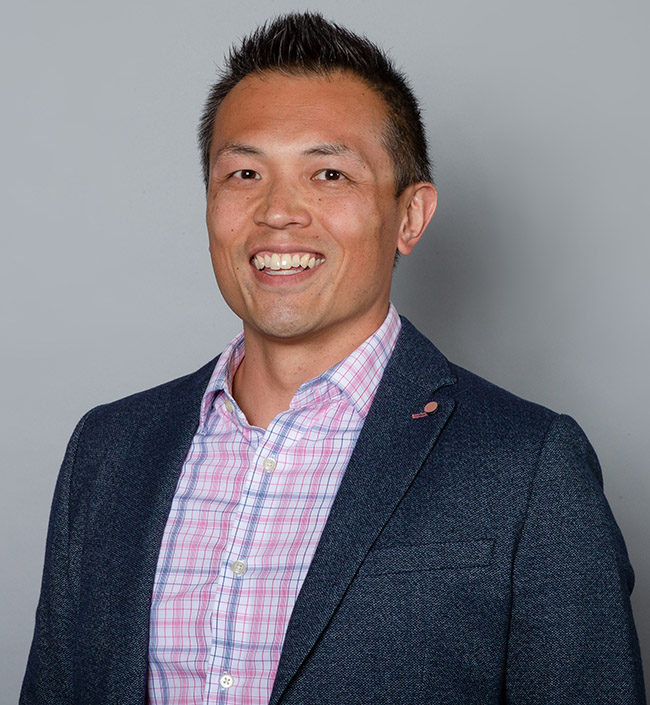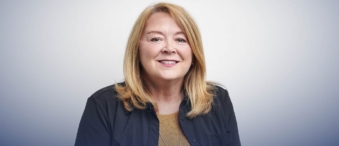Originally published: July, 2021
Two-time winner of the Show Jumping World Cup and Olympic equestrian silver medalist Ian Millar knows his way around horses. His long and storied career even led to his nickname, Captain Canada. But after a rare accident on his farm in Perth, he was rushed to The Ottawa Hospital Trauma Centre with a severe arm injury. Ian was quickly losing blood, causing deep concern for his life.
“My main barn guy, who has medical training, rushed to help along with my family. They thought I was in big trouble because of the amount of blood I was losing.”
– Ian Millar
In late October 2020, Ian was riding a young mare when something startled her. She reared up on her hind legs, and then came down hard and spun around, causing Ian to be tossed over her head and onto the ground. “I was sailing through the air; I knew exactly what I was going to do in terms of landing to make sure there was no damage. Normally, the horse will do what it can to avoid stepping on you, but this one came down on me three times,” says Ian.
Significant blood loss
The 74-year-old could feel pain through his ribs and one leg. However, the real concern was the damage to his left arm, just above the elbow. “I tried to get up but the bleeding was significant. The wound was about eight inches in length and I could see the nerves and muscles. My main barn guy, who has medical training, rushed to help along with my family. They thought I was in big trouble because of the amount of blood I was losing.”
“They were beyond words. I want to say there were about six team members there when I arrived, and they were ready to rock and roll.”
– Ian Millar
A tourniquet was quickly created to stop the bleeding while a call went out to 9-1-1 for help. Within minutes, paramedics arrived and whisked him to Carleton Place, where the helicopter was waiting to fly him to our Trauma Centre.
Ian remained conscious the entire time and says the air ambulance paramedics were fantastic as they helped control the bleeding and keep him calm until they arrived at the hospital. When wheeled into the Trauma Centre, Ian says an exceptional team awaited him. “They were beyond words. I want to say there were about six team members there when I arrived, and they were ready to rock and roll.”

Trauma Centre serving eastern Ontario
With the uncertainty over the extent of damage to Ian’s arm, he would need the most advanced treatment options available. Our hospital has the only Level 1 Trauma Centre in eastern Ontario for adults — this is where the most critically injured patients from across the region, including Québec in some cases, come to for lifesaving care, often bypassing smaller community hospitals.
“I had just walked into the resuscitation bay when we received the call that an ORNGE air ambulance was on the way, and there was the risk of the life-threatening arterial bleed.”
– Dr. Edmund Kwok
Today, when patients like Ian arrive by air ambulance to the Civic Campus, they need to be rushed across busy Carling Avenue from the helipad to the hospital. All that will change when the New Campus Development site on Carling Avenue is complete in 2028. Our new hospital campus will save crucial time with dedicated high-speed elevators that will bring critically ill and severely injured patients directly from the rooftop helipad to a trauma bay.
Specialized teams ready
When Ian arrived, Dr. Edmund Kwok, an Emergency Department (ED) physician and Director of Quality Improvement Unit for the ED at our hospital, was waiting. He still vividly remembers that day. “It was the beginning of my shift. I had just walked into the resuscitation bay when we received the call that an ORNGE air ambulance was on the way, and there was the risk of the life-threatening arterial bleed,” recalls Dr. Kwok.
With that call, Dr. Kwok and his team prepared the trauma bay for the patient’s arrival. “When it’s an ORNGE ambulance we know it’s more severe. Our team, including physicians like myself, the nurses, and respiratory therapists are ready.”
Ian was conscious, stable, and after a full assessment, the main concern remained his arm. Dr. Kwok and his team had to determine if the injury was an arterial or venous bleed — one being much more challenging than the other is. “The arterial injuries can bleed out very quickly. Therefore, it is a potentially life-threatening situation. It’s like plumbing. When we release the pressure it has to be done in a very controlled manner,” explains Dr. Kwok.

Expert team collaboration
Once they removed the tourniquet, Ian started to bleed out. “We put a call out to vascular, orthopaedic, and plastic surgeons. We needed these specialists involved, and their response was prompt. We had the vascular team at the bedside before Ian’s imaging was completed.”
“Before this, I didn’t know the Civic Campus was the only trauma centre in our region. The care I received was unbelievable. We’re fortunate to have that team of experts ready for any injury. It seemed to me every specialty was waiting and ready to help.”
– Ian Millar
Ultimately, the vascular physician determined it was not an arterial bleed and repaired the damage to the veins before handing it off to the plastic surgeon to close the wound. It all happened very quickly, but Dr. Kwok is quick to point out this is a perfect example of having access to each specialty to ensure a positive outcome for the patient. “This is a classic example of an injury which involved different specialists. Vascular and plastic surgeons provide highly specialized services, and to have them all in one location and able to respond promptly made a huge difference in this patient’s outcome because the tourniquet couldn’t have been left on for much longer.”
The damage to Ian’s arm put him at high risk for bone injury, and that’s why it was essential to have orthopaedics on site. The vascular team stopped the bleeding by tying off vessels right at the bedside while Ian awaited a CT scan and angiogram.
Going home six hours later
Remarkably, Ian went home about six hours after he was rushed into hospital. Dr. Kwok says it was an extraordinary case. “I’m glad we were able to help get Ian back home so quickly. He got really lucky. Had this happened to his head, the outcome could have been very different.”
Even more amazing, there were no broken bones, only a dislocated rib and a superficial leg wound. For Ian, it was an eye-opening experience. “Before this, I didn’t know the Civic Campus was the only trauma centre in our region. The care I received was unbelievable. We’re fortunate to have that team of experts ready for any injury. It seemed to me every specialty was waiting and ready to help.”

As an emergency medicine physician, Dr. Kwok admits it’s wonderful to see a story like Ian’s have this kind of ending. “No words can explain how positive it is to see Ian’s outcome. It rejuvenates our team and it reminds us we are making a difference.”
The Olympian was back riding within a couple of weeks with full use of his arm. And for that, he’s grateful for the team that cared for him. “They were a well-oiled machine. It made me proud to be a Canadian.”
The Ottawa Hospital is a leading academic health, research, and learning hospital proudly affiliated with the University of Ottawa.




